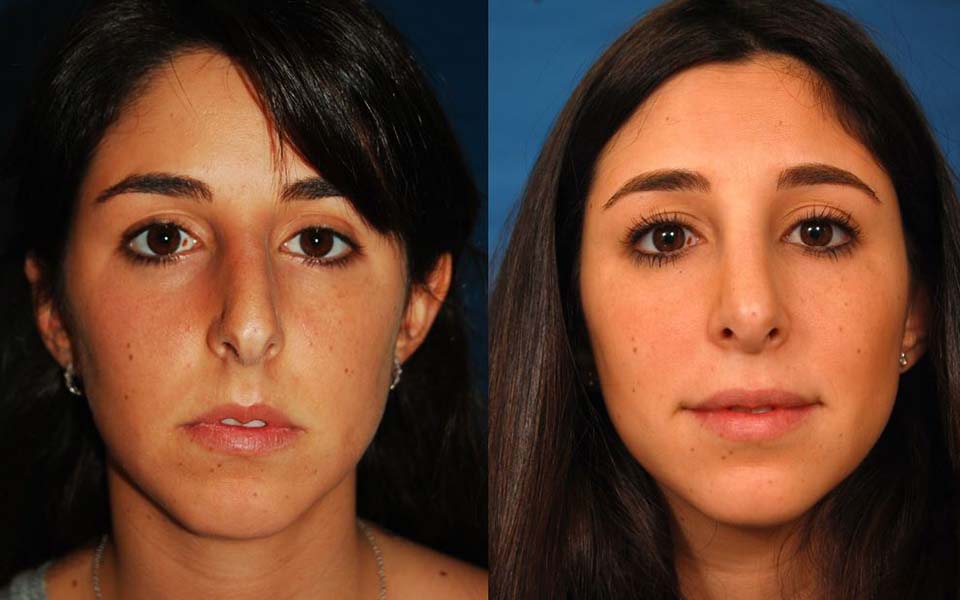A nose job, commonly known as rhinoplasty, is a transformative surgical procedure that can significantly enhance both aesthetics and breathing functionality. However, before delving into this life-changing journey, it’s crucial to understand the various aspects of a nose job, including its types, potential risks, costs, insurance coverage, and alternative options.
In this comprehensive guide, we will explore everything you need to know about rhinoplasty, providing you with valuable insights to make an informed decision. From the different types of nose jobs to factors influencing costs, and even exploring alternatives, we aim to equip you with the knowledge to consider this procedure thoughtfully.
Quick Navigation:
Types of Nose Jobs
1. Open Rhinoplasty (Functional Rhinoplasty)
Open rhinoplasty is a surgical technique that involves making incisions outside the nose, giving the surgeon direct access to the nasal structures. This procedure is commonly performed for both medical and cosmetic reasons, allowing for substantial changes to the nose’s appearance and function. It is particularly beneficial for complex cases that require extensive modification of bone, cartilage, and skin.
2. Closed Rhinoplasty
Closed rhinoplasty, on the other hand, is a less invasive technique where all incisions are made inside the nostrils. This approach leaves no visible external scars, making it an attractive option for those concerned about potential scarring. Closed rhinoplasty is most suitable for patients requiring minor adjustments to the nasal structure.
3. Revision Rhinoplasty
In some cases, patients may experience unsatisfactory results from a previous nose job or encounter complications. Revision rhinoplasty is a procedure performed to correct issues arising from the initial surgery. It demands precision and expertise due to the alterations already made to the nasal structures.
4. Filler Rhinoplasty
For those seeking a non-surgical option, filler rhinoplasty presents a temporary solution. Hyaluronic acid fillers are strategically injected into specific areas of the nose to reshape it. The results typically last up to a year, offering patients a preview of potential surgical outcomes without the commitment of permanent changes.

Potential Risks of Nose Jobs
While rhinoplasty is generally considered safe, like any surgical procedure, it carries some risks. It’s essential to be aware of these potential complications before making a decision. Some of the risks include:
– Complications related to anesthesia:
Anesthesia is used during the surgery to ensure patient comfort. However, there can be adverse reactions to anesthesia, although they are rare.
– Infections:
Post-surgery infections can occur, although they are infrequent. Surgeons take precautions to minimize the risk of infection.
– Breathing difficulties:
In some cases, patients may experience temporary breathing difficulties as the nasal passages heal.
– Dissatisfaction with the final appearance:
Patients’ expectations and outcomes may not always align, leading to dissatisfaction with the final result.
– Possibility of requiring revision surgery:
As mentioned earlier, some patients may need additional surgery to achieve their desired results.
Cost Overview of Nose Jobs
The cost of a nose job can vary significantly based on multiple factors. According to the American Society of Plastic Surgeons (ASPS), the average surgeon’s fees for rhinoplasty in 2020 were approximately $5,483. However, this figure only includes the surgeon’s fees and does not account for other related expenses. The overall cost can range from as low as $2,500 to well over $15,000.
Factors Influencing Cost
Several elements contribute to the total cost of a nose job. It’s essential to understand these factors to get a better estimate of what to expect. The following are key elements that influence the cost:
1. Consultation Fees:
Before undergoing a nose job, patients typically have consultations with the surgeon to discuss their goals and expectations. These consultations often include detailed photographic assessments for personalized treatment planning. Consultation fees can range from $75 to $250 and may sometimes be applied towards the procedure if scheduled with the same surgeon.
2. Surgeon’s Fee:
The surgeon’s fee constitutes a significant portion of the overall cost. The amount charged by surgeons can vary depending on their expertise, certification, and geographical location. Surgeons certified by prestigious boards, such as the American Board of Facial Plastic and Reconstructive Surgery, may charge higher fees than those with other credentials. Geographical location also plays a role, with surgeons in major cities or affluent areas often charging more than those in smaller towns or less populated regions.
3. Anesthesia Fees:
Anesthesia is administered during the surgery to ensure the patient remains comfortable and pain-free. The fees for anesthesia can vary depending on the anesthesia provider, the duration of the procedure, and the type of anesthesia used (local or general). Anesthesia fees typically range from $800 to $2,000.
4. Hospital or Surgical Facility Fees:
The choice of where to undergo the procedure can impact the overall cost. Hospitals usually charge more than private surgical facilities or doctor’s offices. Facility fees can range from $1,000 to $3,000.
5. Medical Tests:
Before the surgery, some patients may require medical tests such as CT scans, chest X-rays, pregnancy tests, and blood tests. The costs of these tests are usually not covered by insurance for cosmetic procedures.
6. Post-surgery Garments and Medications:
After the surgery, patients may need to purchase post-surgery garments and medications to aid in the recovery process. These additional costs should be considered when budgeting for the procedure.
Insurance Coverage for Nose Jobs
Cosmetic nose jobs are generally considered elective procedures and are not covered by health insurance. However, if a nose job is deemed medically necessary due to trauma or functional impairments that affect breathing, insurance coverage may apply. Additionally, Medicare and state Medicaid plans may cover rhinoplasty in certain medically necessary situations.
Determining the Worth of a Nose Job
Deciding to undergo a nose job is a significant decision that should not be taken lightly. It’s essential to carefully evaluate the advantages and disadvantages, and discuss the procedure thoroughly with a qualified physician or surgeon. For many individuals, the benefits of improved self-confidence and aesthetic satisfaction, or enhanced breathing functionality, outweigh the potential risks and costs associated with the surgery. However, it’s essential to have realistic expectations and understand that results may vary.
Exploring Alternatives to Surgical Rhinoplasty
For those seeking less invasive options or temporary changes, liquid rhinoplasty using dermal fillers is a viable alternative. Liquid rhinoplasty allows for subtle changes to the nose without the need for surgery. This procedure typically costs less and provides immediate results, enabling patients to preview potential surgical outcomes. However, it’s essential to discuss potential risks with a healthcare provider, as complications like infection and, in rare cases, blindness, can occur.
Conclusion
A nose job, or rhinoplasty, is a transformative surgical procedure that offers both aesthetic and functional benefits. Whether you are seeking to improve the appearance of your nose or address breathing issues, rhinoplasty can be a life-changing experience. However, it’s crucial to approach the decision with careful consideration, understanding the potential risks, costs, and alternatives.
Consultation with a qualified and experienced surgeon is essential to discuss your goals and expectations thoroughly. By understanding the various types of nose jobs, potential risks, and the factors influencing costs, you can make an informed decision that aligns with your desires and budget.
Remember, rhinoplasty is a personal choice, and the worth of the procedure depends on your individual needs and goals. Take your time, do thorough research, and consult with a reputable surgeon to determine if a nose job is the right option for you.




![25 Great Jobs that Work from Home or Anywhere [Remote work]](https://jobsmarketupdate.com/wp-content/uploads/2021/10/Great-Jobs-that-Work-from-Home.jpg)

